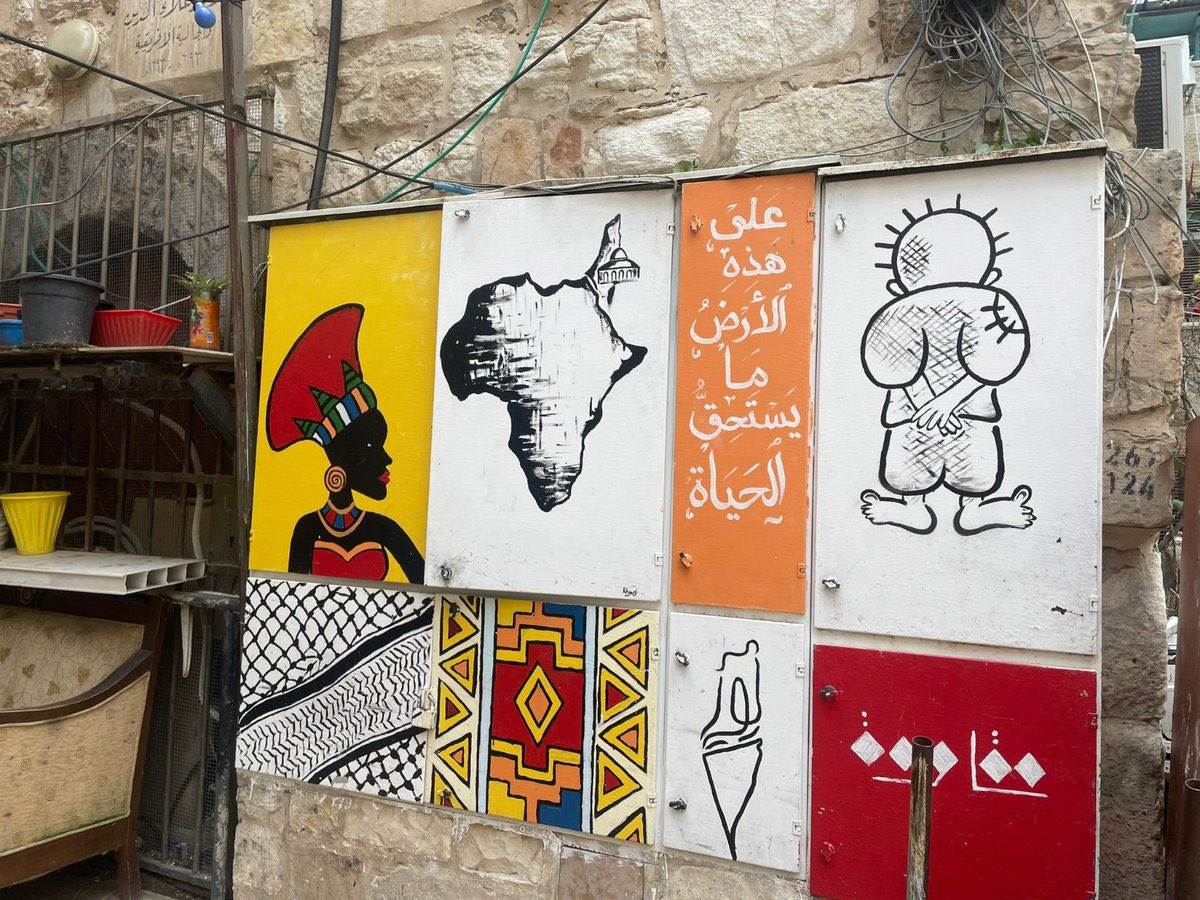THREAD
In July 2018, a horrifying video began to circulate on social media.
2 women & 2 young children are led away by a group of soldiers. They are blindfolded, forced to the ground, and shot 22 times.
#BBCAfricaEye investigated this atrocity. This is what we found...
In July 2018, a horrifying video began to circulate on social media.
2 women & 2 young children are led away by a group of soldiers. They are blindfolded, forced to the ground, and shot 22 times.
#BBCAfricaEye investigated this atrocity. This is what we found...

This is the video that went viral. We’ve cut out the ending, but - WARNING – it’s distressing.
Immediately, a fierce debate began on social media.
Some said this happened in Cameroon. Others said it was Mali.
Some said this happened in Cameroon. Others said it was Mali.

In July, the Cameroonian govt dismissed the allegations as “Fake News.”
They claimed the guns were not those carried by the Cameroonian military.
They said the camouflage pattern was not used in the Far North.
They asked why the soldiers were not wearing full combat gear.
They claimed the guns were not those carried by the Cameroonian military.
They said the camouflage pattern was not used in the Far North.
They asked why the soldiers were not wearing full combat gear.
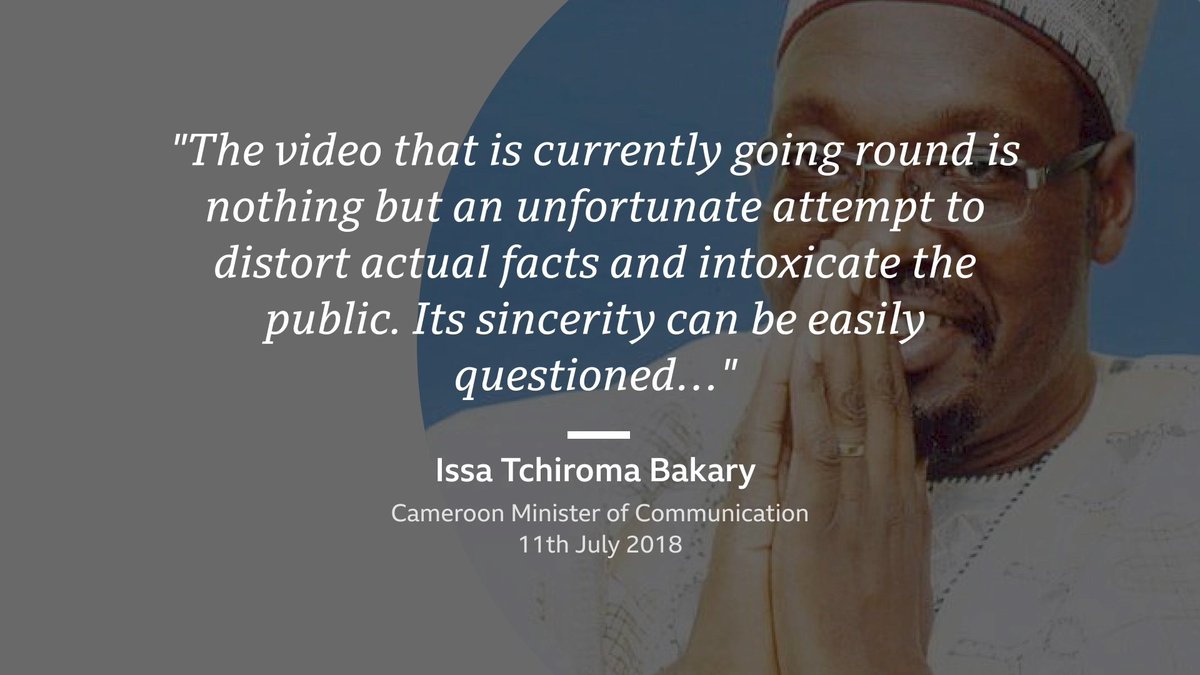
So we took a closer look at the video…and found clues that prove the government was wrong.
We’ll start with the location. Where did this happen?
The first 40 seconds of the video capture a mountain range with a distinctive profile
We’ll start with the location. Where did this happen?
The first 40 seconds of the video capture a mountain range with a distinctive profile
After a tip off from a Cameroonian source, we found an exact match for that ridge line on Google Earth
It places the scene on a dirt road outside a town called Zelevet, in the Far North of Cameroon, close to the border with Nigeria.
This is the region where Cameroonian soldiers are fighting the jihadist group Boko Haram.
This is the region where Cameroonian soldiers are fighting the jihadist group Boko Haram.
Once we had the general location, we looked at other details in the film – tracks, buildings, trees – and matched them precisely to features visible on satellite imagery.
Putting all this evidence together, we can say with certainty that the killings happened here
goo.gl/UA3YVz
goo.gl/UA3YVz

When did this happen?
Again, the video contains clues.
This building is visible in the video. But satellite imagery reveals that, back in November 2014, the walls around it had not yet been built.
The killing happened after November 2014.
Again, the video contains clues.
This building is visible in the video. But satellite imagery reveals that, back in November 2014, the walls around it had not yet been built.
The killing happened after November 2014.
The video also shows this building. Satellite images show us that, by February 2016, it had been demolished.
The killings happened before February 2016.
The killings happened before February 2016.
We know that the murders took place in the hot, dry season, because this footpath – just visible in the video – only appears on the satellite imagery between January and April.
That makes it probable that we’re looking at early 2015
That makes it probable that we’re looking at early 2015
Notice that the soldiers, like moving sundials, cast shadows on the track.
A simple formula tells us the angle and direction of the sun.
This corroborates our conclusion on the date, and narrows the timeframe further: the killings happened between March 20 and April 5th 2015
A simple formula tells us the angle and direction of the sun.
This corroborates our conclusion on the date, and narrows the timeframe further: the killings happened between March 20 and April 5th 2015
We know where. We know when.
But who are the men who killed these women and children?
We’ll start by establishing that these are members of the Cameroonian military.
But who are the men who killed these women and children?
We’ll start by establishing that these are members of the Cameroonian military.
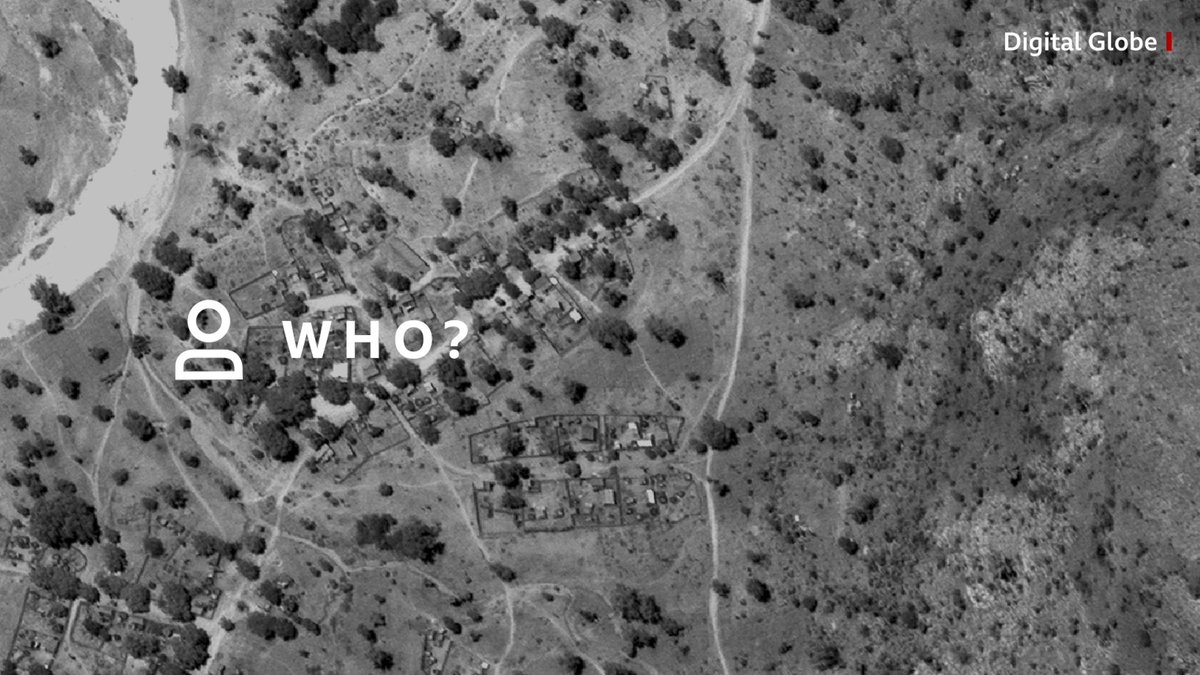
The government’s July statement claimed that the guns seen in the video are not those used by Cameroonian troops.
But this is a Serbian-made Zastava M21. It’s rare in sub-Saharan Africa, but it *is* used by some divisions of the Cameroonian army.
But this is a Serbian-made Zastava M21. It’s rare in sub-Saharan Africa, but it *is* used by some divisions of the Cameroonian army.
The govt also claimed that Cameroonian soldiers in the Far North wear pale, desert-style fatigues, not the darker, forest-style camouflage seen in the video.
But we found these images on Facebook – tagged to Zelevet – of soldiers wearing the type of camouflage seen in the video
But we found these images on Facebook – tagged to Zelevet – of soldiers wearing the type of camouflage seen in the video
The govt also asked why the soldiers in the video were not wearing full combat gear – heavy helmets, bulletproof vests, and rangers boots.
The answer is that they were not out on patrol. They were just a few hundred metres away from this combat outpost
The answer is that they were not out on patrol. They were just a few hundred metres away from this combat outpost
We know this is a combat outpost because we found a @Channel4News report that was filmed here in 2015 – and we matched the features visible in that report to the details we see on satellite imagery.
In August, there was a sudden change in the govt’s position.
After weeks of denying that these killings took place in Cameroon, the Minister of Communication announced that 7 members of the military had been arrested and were under investigation.
After weeks of denying that these killings took place in Cameroon, the Minister of Communication announced that 7 members of the military had been arrested and were under investigation.

We have identified three men who actually pulled the trigger.
One of them is this man, introduced in the video as “Tchotcho”
One of them is this man, introduced in the video as “Tchotcho”
We found a Facebook profile that links the nickname 'Tchotcho' to a soldier called Cyriaque Bityala.
The name Cyriaque Bityala also appears on the government’s list of men now under investigation.
The name Cyriaque Bityala also appears on the government’s list of men now under investigation.

The BBC also spoke with a former Cameroonian soldier, who asked not to be named.
He confirmed that this is ‘Tchotcho’ Cyrique Bityala
He confirmed that this is ‘Tchotcho’ Cyrique Bityala

At the end of the video, we see him again - blindfolding the litte girl he is about to kill.
A few seconds later, he draws his weapon and opens fire.
A few seconds later, he draws his weapon and opens fire.
We identified two other guns used in the killing.
One of the was in the hands of this man. We see him here blindfolding the women with the baby just before the shooting starts.
Our military source identified him as Barnabas ‘Gonorso'.
One of the was in the hands of this man. We see him here blindfolding the women with the baby just before the shooting starts.
Our military source identified him as Barnabas ‘Gonorso'.
Although we were not able to confirm this identification, a very similar name – Barnabas Donossou – appeared 11 days later in the government’s list of men now under investigation. 

The other gun used in the killing is the Zastava M21 we saw earlier.
It’s in the hands of a man identified in the video as “Cobra.”
Who is Cobra?

It’s in the hands of a man identified in the video as “Cobra.”
Who is Cobra?
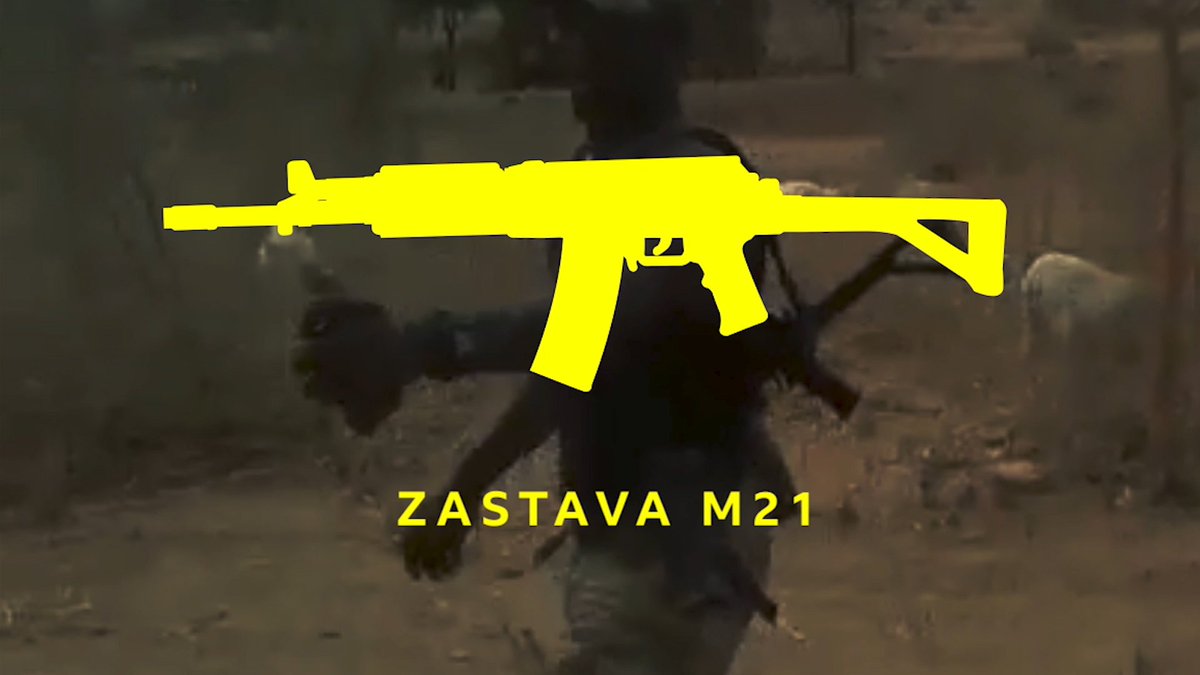
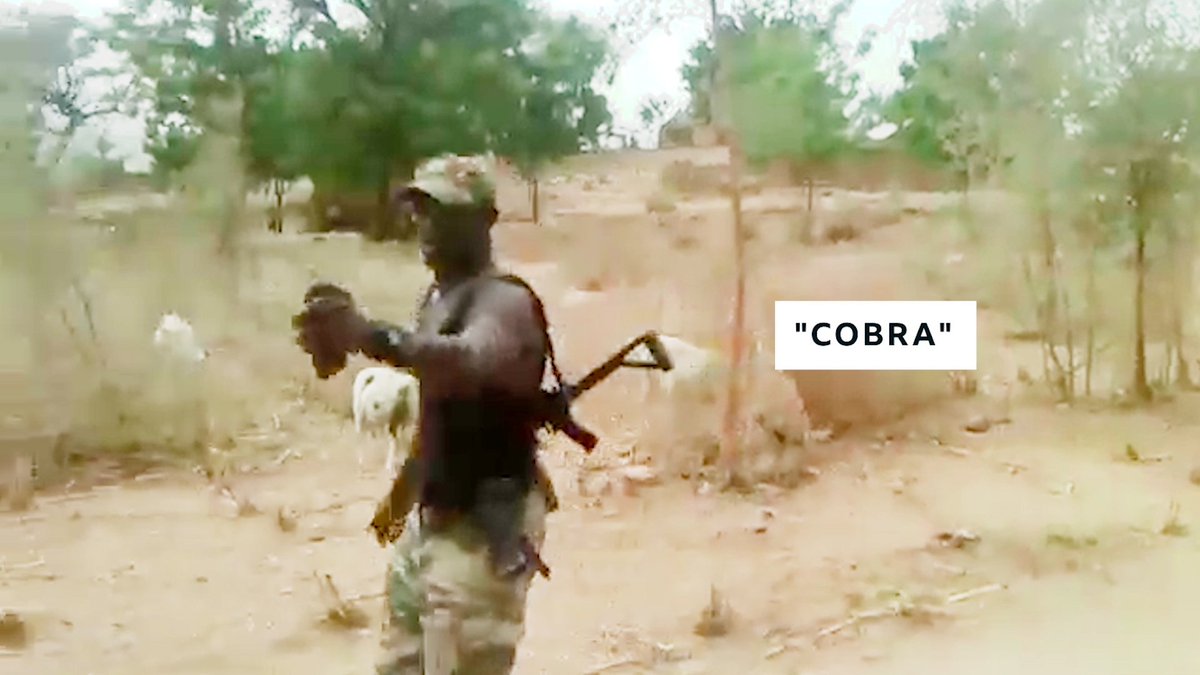
As the women and children are killed, “Cobra” is the last man still firing into the bodies.
A colleague calls out “Tsanga, leave it, they’re dead.”
When he keeps firing, they call again: “That’s enough, Tsanga.”
A colleague calls out “Tsanga, leave it, they’re dead.”
When he keeps firing, they call again: “That’s enough, Tsanga.”

The name Tsanga also appears on the government’s list of soldiers now under investigation, suggesting that “Cobra” is a nickname for Lance Corporal Tsanga. 
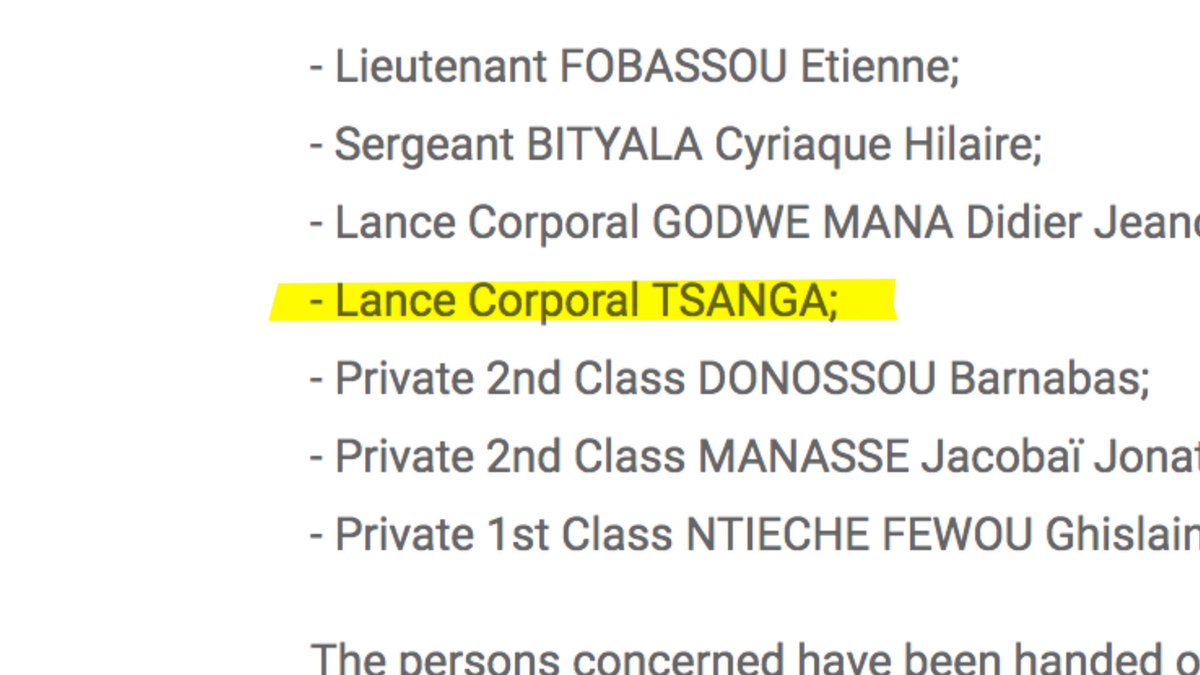
We put these finding to the government of Cameroon, who said that 7 soldiers have been arrested, disarmed, and imprisoned while under investigation.
The government statement makes clear that all these men enjoy the presumption of innocence, and that they will be given a fair trial. 
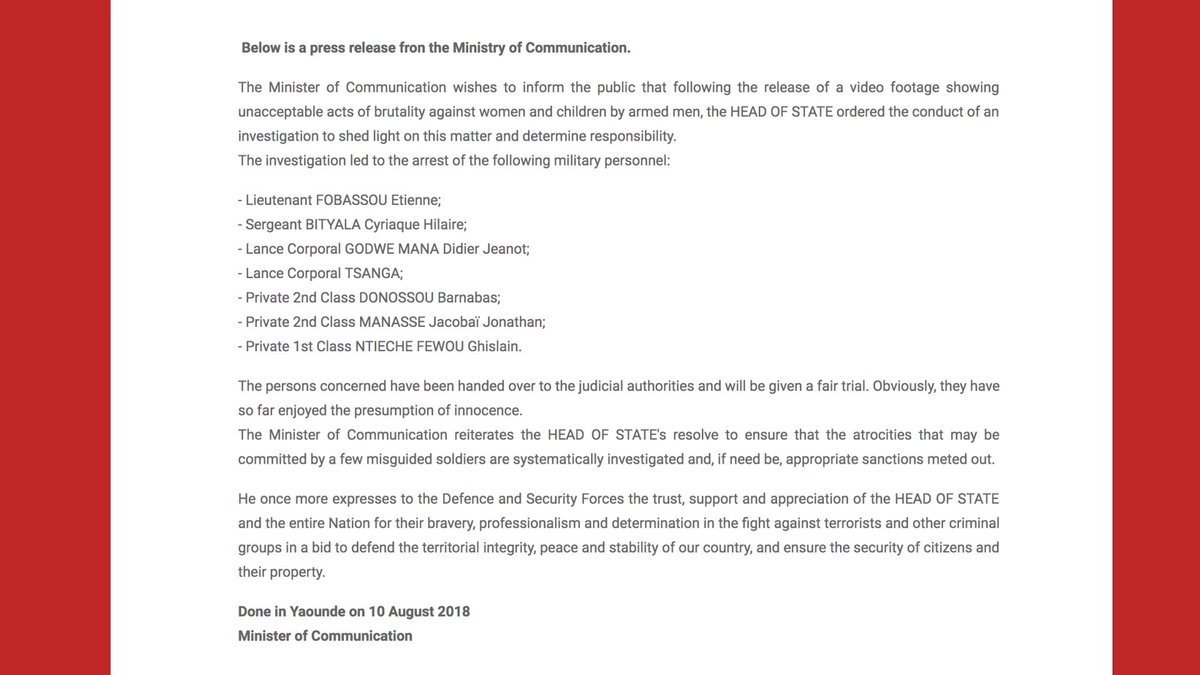
The two women killed outside Zelevet received no trial at all.
No presumption of innocence was extended to the children who died with them.

No presumption of innocence was extended to the children who died with them.

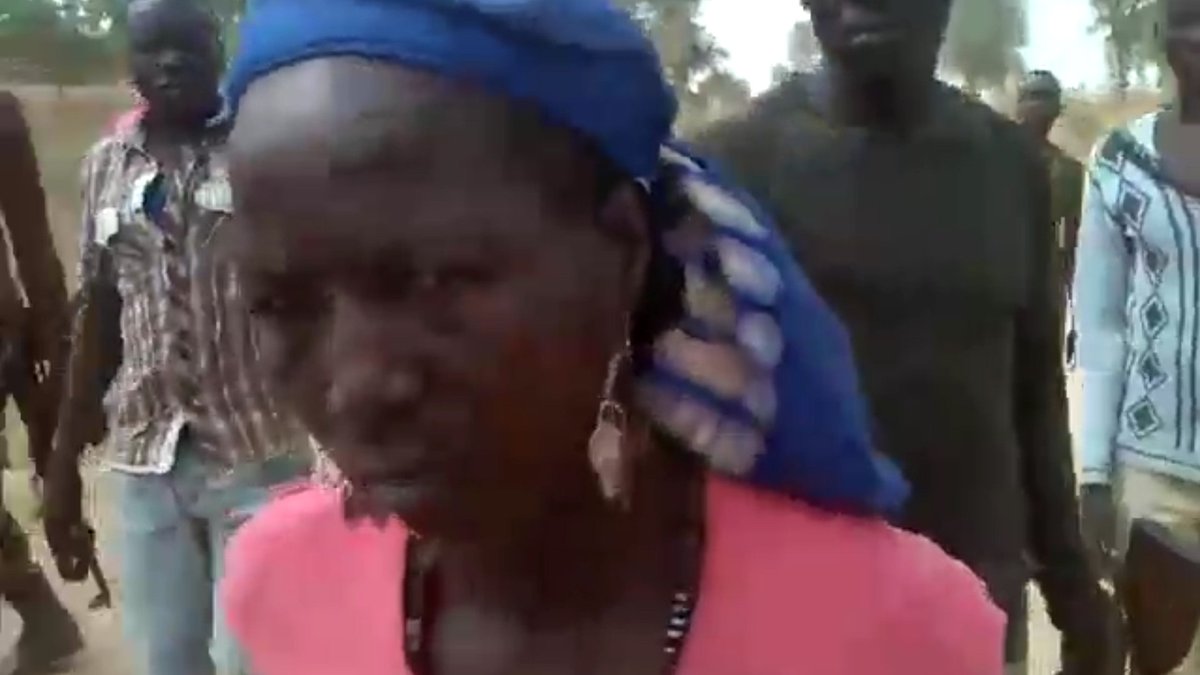
This investigation was produced by @yaolri @danielsilas @benstrick @effisfor and @emmanuelfreudenthal
Thanks to the analysts and journalists who contributed
@Sector035
@obretix
@y_vdw
@JHarris_UK
@MFlumf
@trbrtc
@ilariallegro
@samdubberley
@bellingcat
@amnesty
Thanks to the analysts and journalists who contributed
@Sector035
@obretix
@y_vdw
@JHarris_UK
@MFlumf
@trbrtc
@ilariallegro
@samdubberley
@bellingcat
@amnesty
Correction to these credits: the other producers on this story are @BenDoBrown and @EmmanuelFreuden. Apologies to @benstrick, who had nothing to do with it, for the tag typo.
• • •
Missing some Tweet in this thread? You can try to
force a refresh








